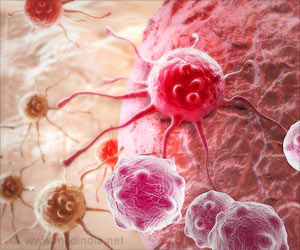This study was conducted at the Wyss Institute for Biologically Inspired Engineering at Harvard University, Harvard John A. Paulson School of Engineering and Applied Sciences (SEAS), Harvard Medical School (HMS), and the Roche Innovation Centers in Switzerland and Germany, and published in PNAS.
An emerging class of such immunotherapeutics, known as T cell bispecific antibodies (TCBs), are of growing importance with several TCBs that the U.S. Food and Drug Administration (FDA) approved for the treatment of
.
One major challenge in the development of TCBs and other immunotherapy drugs is that the antigens targeted by TCBs can be present not only on tumor cells but also in healthy cells in the body.
Advertisement
This can lead to “on-target, off-tumor” cell killing and unwanted injury of vital organs, such as the kidney, liver, and others, that can put patients participating in clinical trials at risk. Currently, there is no human in vitro models of the kidney that sufficiently recapitulate the 3D architecture, cell diversity, and functionality of organs needed to assess on-target, off-tumor effects at a preclinical stage.
The researchers developed an immune-infiltrated human kidney organoid-on-chip model composed of tiny kidney tissue segments that contain vasculature forming nephrons, which can be infiltrated by circulating immune cells.
They used this model to understand the specific toxicity of a pre-clinical TCB tool compound that targets the well-characterized tumor antigen Wilms’ Tumor 1 (WT-1) in certain tumors. Importantly, WT-1 is also expressed at much lower levels in the kidney, making it an important organ to study its potential on-target, off-tumor effects in. Their findings are published in PNAS.
Assessing Immunity in In-vitro Kidney Organoid
In 2019, Lewis’ group, together with that of Joseph Bonventre, M.D., Ph.D. at Brigham and Women’s hospital along with co-author Ryuji Morizane, M.D., Ph.D., found that exposing kidney organoids created from human pluripotent stem cells to the constant flow of fluids during their differentiation enhanced their on-chip vascularization and maturation of glomeruli and tubular compartments, relative to static controls.
“Given that this in vitro model represents most of the cell types in the kidney and incorporates the immune system, it could support the assessment of on and off-target effects from TCBs as well as complex cellular interactions,” said Kimberly Homan, Ph.D., a former postdoctoral researcher in Lewis’ lab, first author of the initial work, and a co-corresponding author of this new study.
Approaching this challenge, the team first advanced their in vitro system to enable the continuous circulation of human immune cells, collectively known as peripheral blood mononuclear cells (PBMCs), through it and the retrieval of samples for the analysis of immune cell-secreted proteins.
They demonstrated that an optimal flow rate was able to support the viability of “immune effector” cells, a subpopulation of PBMCs with the ability to kill other cells, over a 5-day period, and that these cells actually infiltrated the nephron-like structures and microvessels present in the kidney organoids on a chip.
The preclinical WT-1-targeting tool TCB (WT1-TCB) was created to specifically bind to the WT-1 antigen when presented by the HLA protein on the surface of target cells, in that case WT-1-expressing tumor cells. HLA helps the immune system distinguish between proteins on healthy cells versus those produced by tumors and foreign invaders by familiarizing it with the body’s normal protein repertoire.
They found that WT-1 was expressed by podocytes, but was undetectable in the proximal and distal tubule cells. Moreover, they found that a significant proportion of these differentiated kidney cell types also expressed HLA.
To understand the specific targeting effects of WT1-TCB, the researchers compared them to those produced by a non-specific TCB that could bind antigens on all kidney cell types (ESK1-like TCB, a positive control) and a TCB that could only bind immune cells (DP47, a negative control).
The three compounds indeed elicited strikingly different effects when introduced into the kidney organoid-on-chip model alongside PBMCs under high-flow conditions over five days. As expected, DP47 caused very few cells to die, while the ESK1-like TCB targeted and killed all cell types in a dose-dependent manner by recruiting immune effector cells.
Reference :
- Immune-infiltrated kidney organoid-on-chip model for assessing T cell bispecific antibodies- (https://www.pnas.org/doi/10.1073/pnas.2305322120)
Source: Eurekalert



